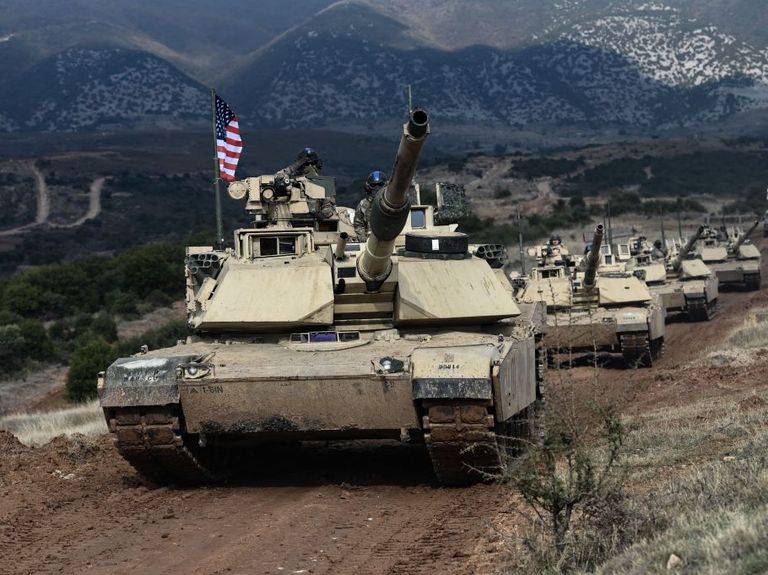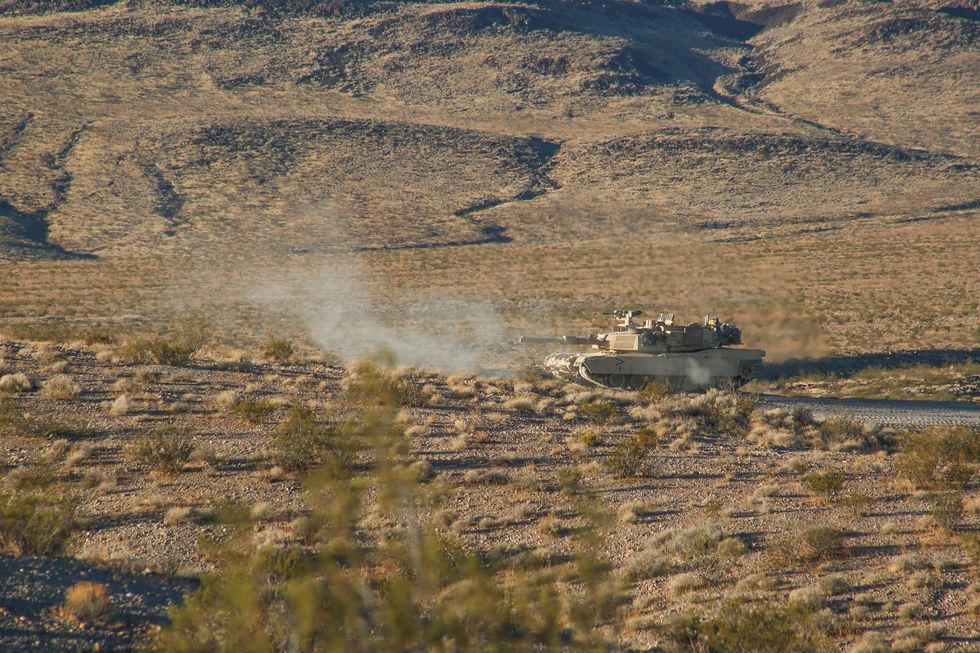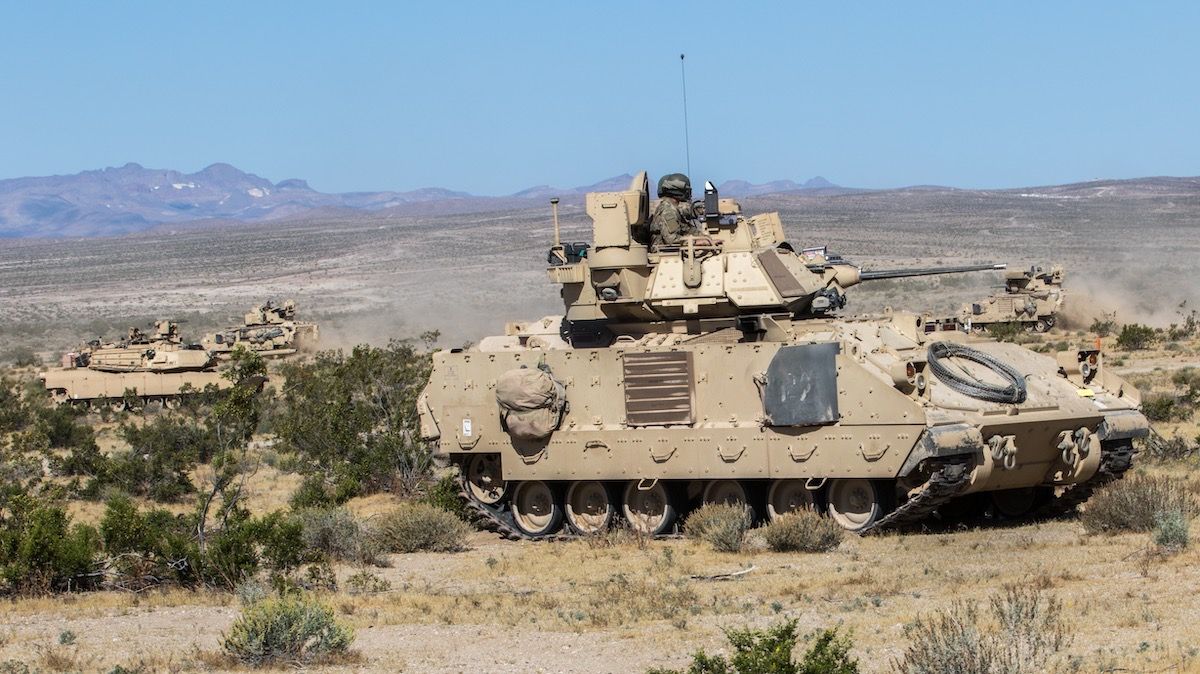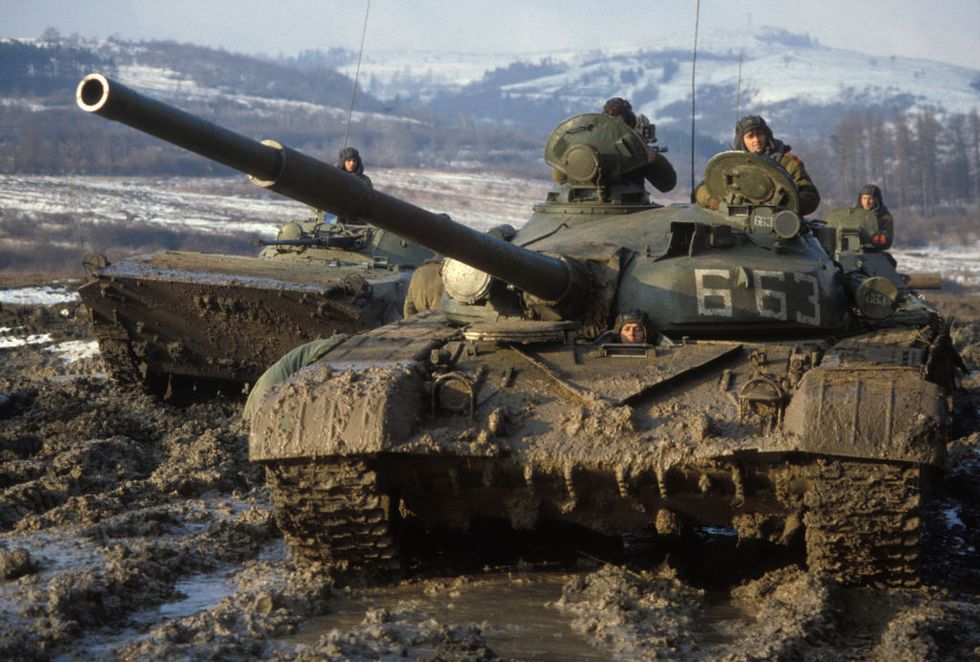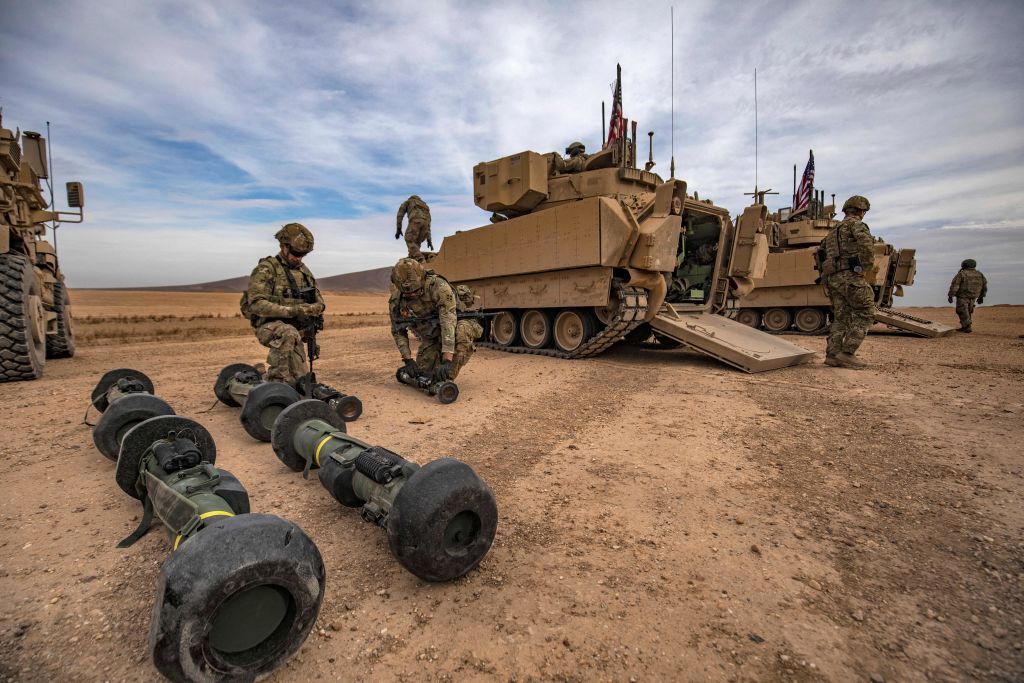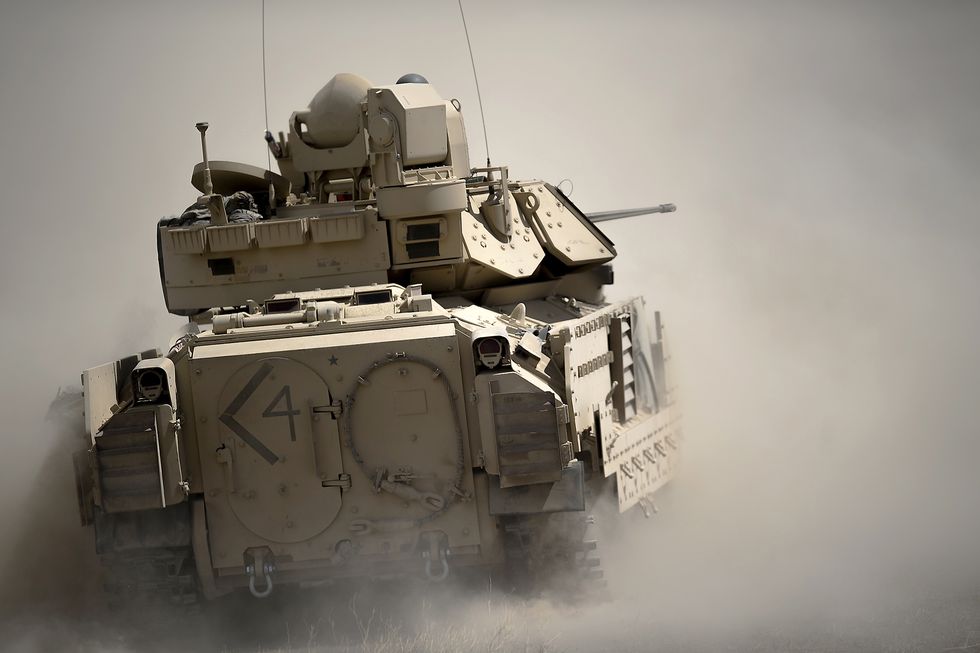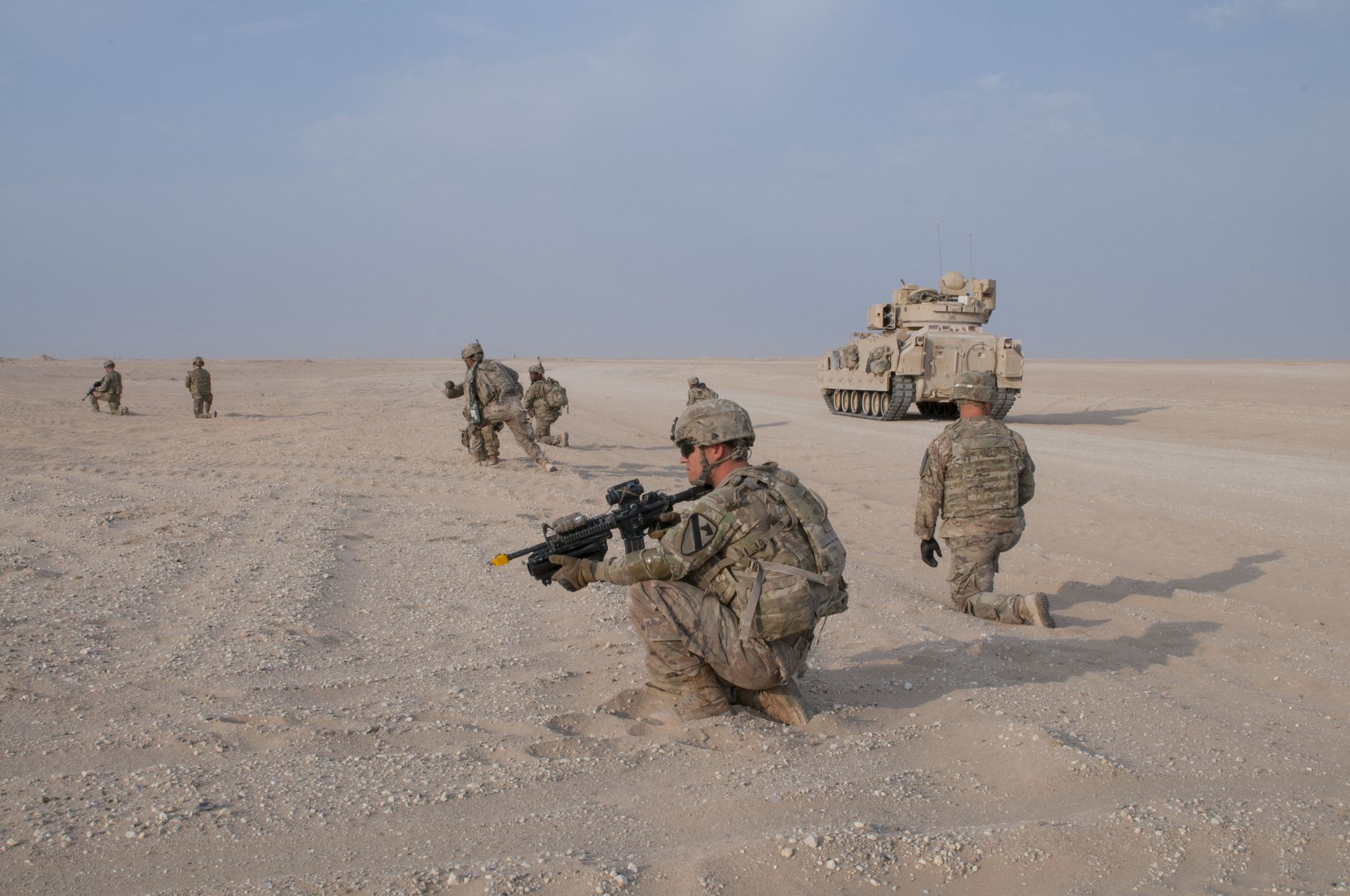- What if the U.S. Army got rid of its tanks?
- The Army bristles with so much firepower, in so many forms, it could likely still stop any conceivable attack from any army—on Earth, anyway.
- Tanks are the service’s main offensive weapon, and without them, the Army would find it difficult to take new ground.
In 1994, the U.S. Army dumped decommissioned M60 main battle tanks into the ocean off the coast of Florida. Replaced by the M1A1 Abrams, the tanks were surplus and the service no longer needed them. Their new mission, becoming a haven for sea life, was wildly successful; today, the tanks are a popular diving destination, attracting fish, sharks, lobsters, and other animals.
Now let’s imagine: what if, in a fit of madness, the service dumped all 2,300 of its Abrams tanks into the ocean? While that would create a housing boom for the lobsters, what would happen to the Army’s job of defending the nation, our allies, and our interests abroad? Would the loss of the tank force affect the service’s ability to carry out essential wartime missions?
What the Tank Does
The tank is the principal offensive land weapon of the army. According to the U.S. Army, the fundamental mission of tank units is to “close with and destroy the enemy.” This is an offensive mission that allows an army to take ground and eventually win the war. Tanks do this with a combination of speed, protection, and mobility. Speed gives tanks the ability to advance to the enemy lines, enter them, and move beyond them, while protection permits tanks to shrug off hits from enemy weapons and keep advancing. Firepower, in the form of a large-caliber main gun and machine guns, means tanks can blast away at enemy defenses, including other tanks, allowing the attack to move forward.
As of 2020, there were 73,000 tanks worldwide (not including roughly 2,500 tanks Russia has lost in Ukraine) with almost every army on Earth counting them in their inventories. The United States is currently developing a new version of the Abrams tank, the M1E3 Abrams, while Germany and France are developing the Main Ground Combat System, or MGCS. China has the ZTZ-99A2 tank, Japan the Type-10 tank, and Korea the K2 Black Panther. Although the tank has been declared dead many times in the past century, it’s clear the armies of the world continue to have faith in them.
Ground Rules
Today, the U.S. Army fields a total of 16 armored brigade combat teams, 11 in the active Army and 5 in the National Guard. Each consists of about roughly equal amounts of M1 Abrams tanks and M2 Bradley infantry fighting vehicles, with attached infantry dismounts. For the purposes of this thought experiment, we’ll convert all the M1 tanks to M2 Bradleys.
This exercise will run a U.S. Army combined arms battalion, or a third of a brigade, up against a Russian battalion tactical group, a unit of roughly equal size, though only the Russians will have tanks. We’ll examine two different scenarios: one in which the Russians attack the Americans, and another where the American unit attacks the Russians.
Defense
The modern U.S. Army was originally structured to take on the Soviet Army, a tank-heavy, all-mechanized force that sat on the other side of the Iron Curtain opposing NATO. The U.S. Army, from top to bottom, was designed to kill tanks, or facilitate the killing of tanks. Abrams tank? Kills tanks. Bradley fighting vehicle? Kills tanks and carries infantry that kill tanks. Apache attack helicopter? Kills tanks from the air. Blackhawk helicopter? Can carry tank-killing supplies or tank-killing infantry. And so on.
This structure still exists in the modern Army, not only because the service uses the same (updated) weapons, but because it’s oriented to fight high-end threats that still use tanks. Bradley fighting vehicles still equip TOW2B long-range anti-tank missiles, and the infantry that ride inside them are armed with Javelin anti-tank missiles and AT-4 unguided anti-tank rockets. The result is that our battalion is equipped with a total of 60 anti-tank missile systems and probably 100+ anti-tank rockets.
Most anti-tank weapons today have a hit probability of about 90 percent. If just half of our missiles disable a Russian tank or other armored fighting vehicle, and just one-fifth of our rockets do, that adds up to 50 enemy vehicles destroyed, which is enough to gut a Russian battalion tactical group and render it no longer combat effective. And this doesn’t even factor in artillery and attack helicopter support.
Bottom line: The U.S. Army is perfectly capable of conducting a defensive mission against a peer adversary without tanks.
Offense
Offense is where it gets more tricky. Our experiment takes away the Army’s main offensive tool in its toolbox, and while we still have options, attacking is much trickier without them. Is it still possible? Actually, a battle in Ukraine just last month suggests it is.
Our notional battalion is made up entirely of Bradley fighting vehicles and infantry. Bradleys were originally designed to fight alongside the Abrams tank and advance alongside the Abrams tank, consolidating ground gained in an attack by carrying infantry in an armored, moving cocoon. The Bradley is also armed with a TOW-anti-tank missile launcher and an M242 “Bushmaster” 25-mm automatic cannon. This allows the Bradley to attack targets of opportunity as it advances alongside tanks, but it does not have enough firepower to make it the main reducer of enemy defenses. Nor does it have the armored protection to advance alone, without tanks.
The 25-mm Bushmaster gun is old and scheduled to be replaced by a 50-mm gun in the Bradley’s replacement, but in January 2024, two Bradleys armed only with Bushmasters took on a T-90M, the newest operational Russian tank, and battered it so badly with their light-caliber cannons that the tank was damaged and later abandoned. This was an unexpected result, and crew training on both sides likely played a role … but it did happen.
Without tanks, a Bradley unit would have to adopt different tactics to conduct attacks. Infantry would likely operate on foot, slowing down the pace of the attack. As the infantry run into obstacles, they would call up Bradleys to destroy them, but would need to take care not to expose the Bradleys to effective anti-tank fire. The plodding pace of such an attack—and the fact that the infantry would be out in the open—would make everyone involved vulnerable to Russian artillery strikes.
The Takeaway
Without tanks, the U.S. Army could go only in one direction: backward. An army that can’t go forward can’t lose the war, but it can’t win the war either. The bottom line is that tanks are still invaluable in modern warfare—and until they aren’t, the lobsters will have to find somewhere else to live.

Kyle Mizokami is a writer on defense and security issues and has been at Popular Mechanics since 2015. If it involves explosions or projectiles, he's generally in favor of it. Kyle’s articles have appeared at The Daily Beast, U.S. Naval Institute News, The Diplomat, Foreign Policy, Combat Aircraft Monthly, VICE News, and others. He lives in San Francisco.
